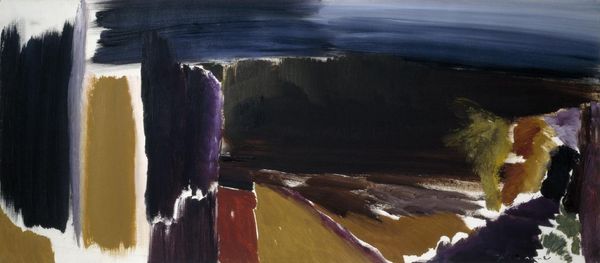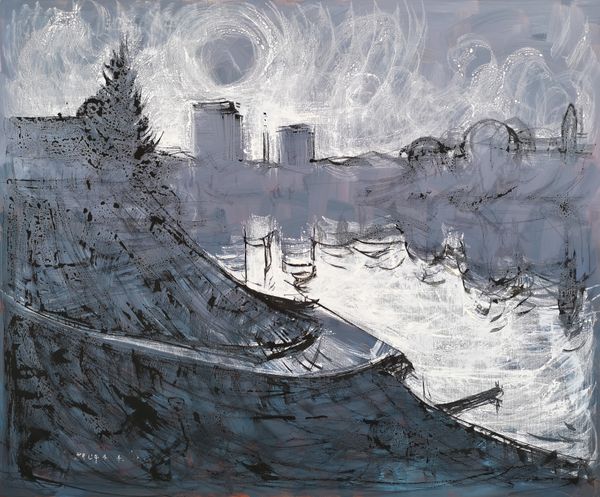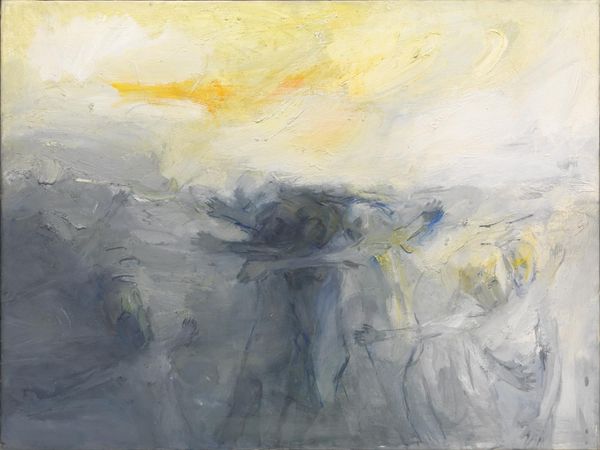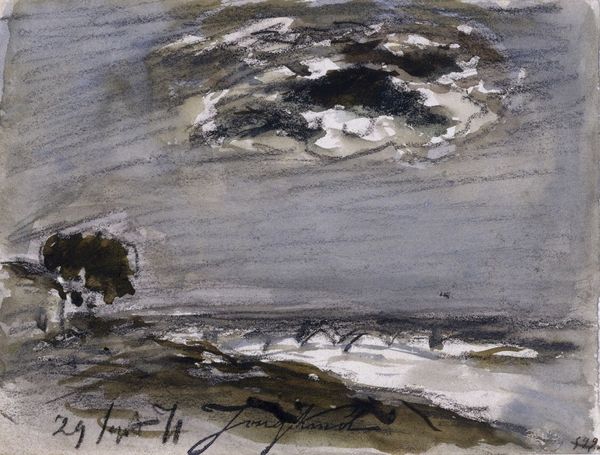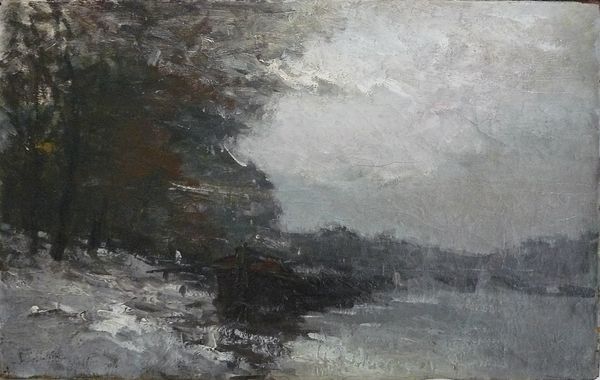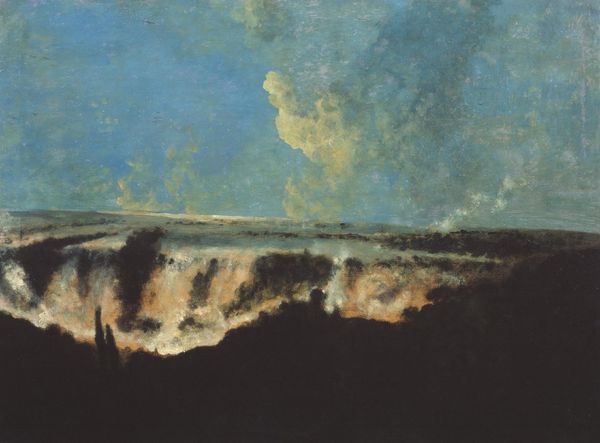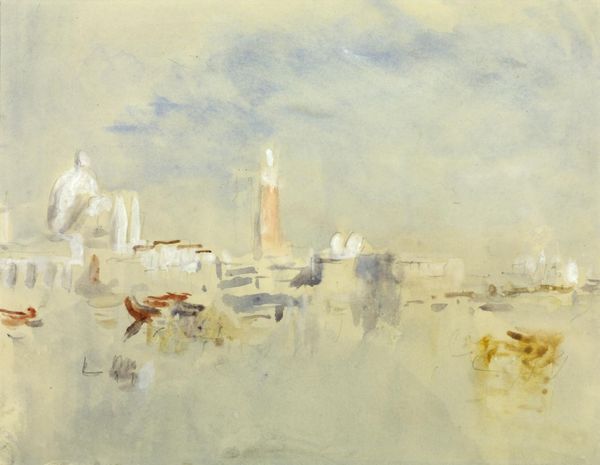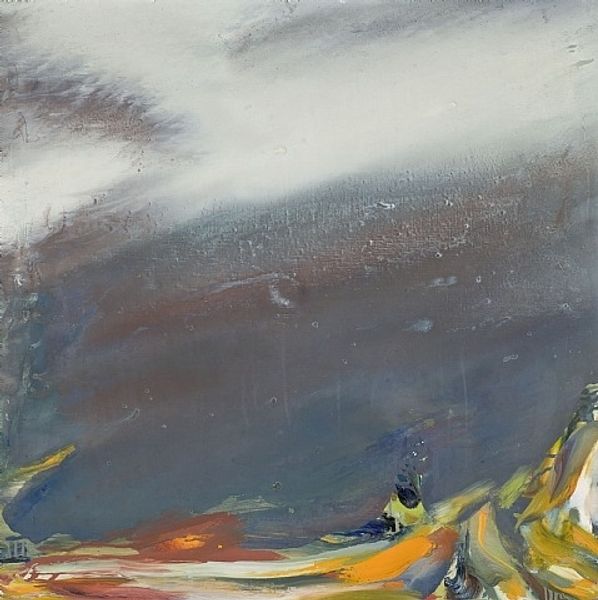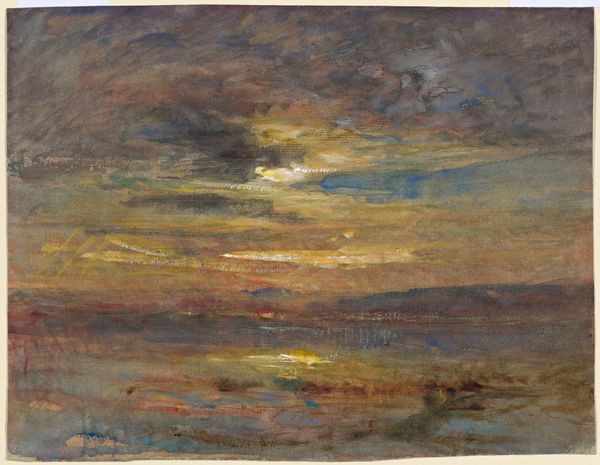
watercolor
#
landscape
#
figuration
#
oil painting
#
watercolor
#
abstraction
#
symbolism
#
watercolor
Copyright: Public domain
Curator: Well, here we have “Mists” painted in 1906 by Mikalojus Konstantinas Čiurlionis. It seems to be done in watercolor... It has a rather… dreamy quality, wouldn’t you agree? Editor: Immediately, I'm hit by a sense of ambiguity, like a half-remembered dream. The colors feel muted, blending together as though one state is becoming another, perhaps representing liminal spaces of consciousness. Curator: Absolutely. It almost feels like peering into a world caught between reality and imagination, which I find quite fitting for the Symbolist movement Čiurlionis was a part of. Editor: I’m struck by how these "mists" function symbolically. Cultures across the world connect mist and fog with concealment, uncertainty, but also potential, birthing of new worlds. Note that nebulous sky above those figures that almost appear like standing stones. It is the threshold. Curator: Yes! The ambiguity is really interesting to me. Do you think he was trying to obscure form to hint at deeper, maybe subconscious themes, rather than concrete reality? Editor: Undeniably. Abstraction is key here. The scene skirts the edge of recognition, but the lack of defined form forces us to engage with our inner landscapes. Take, for example, what could either be trees, or figures, cloaked by a blue sky turned to raging waters above. This invites personal interpretation. What is hidden? Curator: You’ve put your finger on what captivates me: that invitation for personal connection. It isn't a painting that dictates a single interpretation, but a reflection of individual emotions and perceptions. It reflects, rather beautifully I believe, how reality isn't as solid as we’d like to think. Editor: Precisely! He captured how reality melts and reforms through perception and memory. Perhaps this painting is best understood not as a depiction of landscape but as an allegory for the elusive nature of experience itself, and how deeply we seek patterns in all aspects of it. Curator: I’m convinced now it may be less about deciphering some encoded symbolism, and more about simply basking in that transient beauty, and those shifting boundaries… of our understanding. Thanks for that, I'm now walking away with a fresh perspective on his painting. Editor: The delight is mine, sometimes it is by considering one single idea that our perspectives can meet a commonality that goes beyond the single truth and allows us the experience of simply experiencing and understanding each other in relation.
Comments
No comments
Be the first to comment and join the conversation on the ultimate creative platform.
